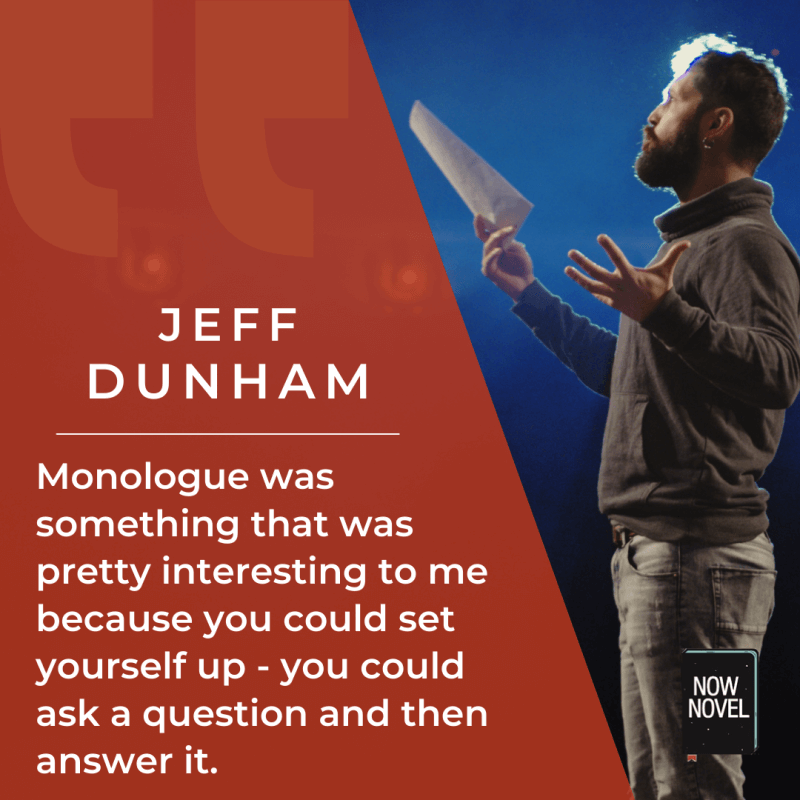Internal or inner monologue is a useful literary device. Dialogue reveals character relationships, their converging or competing goals. Inner monologue gives readers more private feelings and dilemmas. Learn more on how to use inner monologue effectively.
First, what is ‘inner monologue’?
A ‘monologue’ literally means ‘speaking alone’, if we go back to the word’s roots. (It’s not a dramatic monologue performed for others to hear.)
In a play, especially in Shakespeare, a monologue (such as when the villain Iago in Othello expresses his wicked plans) is often used to reveal a character’s secret thoughts or intentions.
In prose, inner monologue typically reveals a fictional character’s private impressions, desires, frustrations or dilemmas.
How and why might you use internal monologue?
How to use inner monologue in stories:
- Use inner monologue to reveal unspoken thoughts
- Describe others from a specific POV
- Show private dilemmas
- Reveal self-perception and mentality
- Show personal associations
Let’s explore these ideas on writing inner monologue further:
1. Use inner monologue to reveal unspoken thoughts
Often a protagonist-narrator will simply state how they feel in narration.
For example: ‘I was apprehensive when I approached the derelict building.’
Or, if you’re using third person limited point of view: ‘Luisa was apprehensive when she approached the building.’
These sentences are fine. Yet you can also create immediacy by making characters’ actual thoughts intrude on the scene.
Here’s an example from David Mitchell’s Cloud Atlas. The character Luisa Rey, an investigative journalist, has found out about a dangerous environmental coverup. Her boss is berating her for missing a meeting:
Grelsch glares at her.
‘I got a lead, Dom.’
David Mitchell, Cloud Atlas (2004).
‘You got a lead.’
I can’t batter you, I can’t fool you, I can only hook your curiosity. ‘I phoned the precinct where Sixsmith’s case was processed.’
The inner monologue reveals:
- The power Grelsch has over Luisa as his employee – it shows Luisa’s awareness of the balance of power in this conversation
- Luisa’s knack for spinning stories to get herself out of trouble
Inner monologue here, by revealing Luisa’s unspoken thoughts mid-conversation, adds to her character while also illustrating her relationship with her boss.
2: Describe others from a specific POV
When your protagonist is the first-person narrator in your story, they can describe other characters simply in narration.
For example, your character might see a frail looking man and narrate ‘he looked like he had a week to live.’
In third-person limited, a little internal monologue can be a useful filtering device for slipping into a viewpoint character’s private consciousness and describing their impressions.
Take this example, also from Cloud Atlas:
The elevator doors close just as Luisa Rey reaches them, but the unseen occupant jams them with his cane. ‘Thank you,’ says Luisa to the old man. ‘Glad the age of chivalry isn’t totally dead.’
He gives a grave nod of acknowledgment.
Hell, Luisa thinks, he looks like he’s been given a week to live.
Why is this internal monologue effective?
Firstly, it gives us a keen sense of Luisa’s voice (her use of the curse word ‘hell’ indicating her ‘tough cookie’ persona). Secondly, it succinctly reveals a key detail about the other character’s appearance.
Use italics like this to take us deeper into a character’s mind. Reveal their impressions, questions and associations in the moment.
3: Show private dilemmas
Inner monologue is useful for showing characters’ private dilemmas, their internal conflicts.
Dostoevsky’s Crime and Punishment is full of good examples. Throughout the novel, we witness Raskolnikov’s anxious, paranoid state of mind.
In this scene, Raskolnikov is about to make his getaway after murdering a pawnbroker near the start of the novel.
Note how even though the passage is in third person, the wording, capturing fleeting impressions, makes it feel as though we are in Rodion’s mind:
But at the same instant several men talking loudly and fast began noisily mounting the stairs […]
Fyodor Dostoevsky, Crime and Punishment (1866).
Filled with despair he went straight to meet them, feeling ‘come what must!’ If they stopped him – all was lost; if they let him pass – all was lost too; they would remember him […] they were only a flight from him – and suddenly deliverance! A few steps from him, on the right, there was an empty flat with the door wide open, the flat on the second floor where the painters had been at work, and which, as though for his benefit, they had just left.
The internal monologue shows the character weighing different outcomes – meeting the men on the stairs or not. This gives the scene tension and immediacy (a sense of engaging involvement in the action).
Use internal monologue similarly to show your characters at important decision-making crossroads.
Get a professional edit
An editor’s experienced eye will help you turn rough drafts into polished prose.
LEARN MORE
4: Reveal self-perception and mentality
Inner monologue in a story may be used to reveal a character’s self-speak and preoccupations.
For example, in a story where a character’s primary or secondary struggle is accepting their body, there may be a scene where they’re looking in a mirror:
He turned and stood at an angle, sucking in his belly. God, how did I get to this?
Or, imagine a character preparing for a job interview:
He lifted his chin, pulling the knot in his tie a little tighter. You’ve got this. He winked. Stop, definitely don’t wink at them. He pulled a stern face. No, you look like you’re interviewing to be someone’s damn body guard.
These lines convey that the character is nervous about the interview and self-conscious.
5: Show personal associations
Use inner monologue to show the personal associations people make.
Take, for example, this passage of internal monologue in Woolf’s novel To the Lighthouse:
But what have I done with my life? Thought Mrs. Ramsay, taking her place at the head of the table, and looking at all the plates making white circles on it. ‘William, sit by me,’ she said. ‘Lily,’ she said, wearily, ‘over there.’ They had that – Paul Rayley and Minta Doyle – she, only this – an infinitely long table and plates and knives […] And meanwhile she waited, passively, for someone to answer her, for something to happen. But this is not a thing, she thought, ladling out soup, that one says.
Virginia Woolf, To the Lighthouse (1927).
It’s clear from Ramsay’s inner monologue that she has mixed feelings about domestic life. The inner monologue suggests Ramsay associates domestic life with lack (‘she, only this – an infinitely long table’).
The inner monologue is effective because we understand Ramsay’s desires and frustrations through it. Note that it’s written in Woolf’s signature stream of consciousness style, which describes the flow of thoughts through a character’s mind.
Note, too, how Woolf:
- Blends inner monologue with dialogue and descriptive detail: We see the ‘white circles’ the plates make; the people seated around the table
- Anchors internal monologue in three-dimensional action: We read Ramsay’s thoughts as she takes her place at the head of the table and serves everyone.
Other examples of monologues in literature include James Joyce’s Ulysses with its run-on sentences, as well as Sylvia Plath’s The Bell Jar, written in the first person and with much interior dialogue.
A final word on writing monologue. Some writers in the past have used quotation marks to indicate thought, but this is generally not done in contemporary times. Thoughts should appear as part of the text, as in the Woolf example above.
Writing interesting internal monologue will help you give characters depth and intrigue. Get ‘How to Write Real Characters: Creating your story’s cast’ for character-writing exercises, tips and checklists, as well as exclusive video content when you become a Now Novel member.



